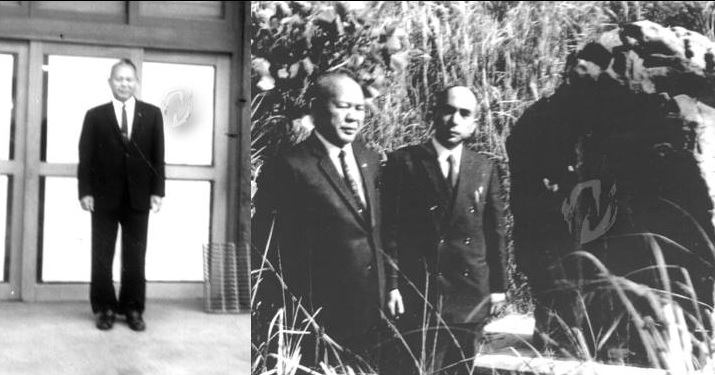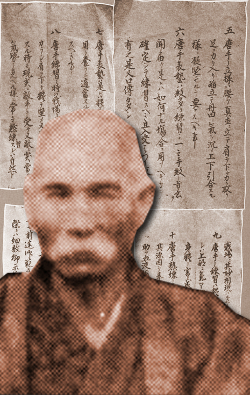The last and probably most important book by Kinjō Hiroshi (2011) has the clear tenor of an “Invention of Karate”. Yes, I just said that. It is about as follows:
In 1904, Itosu Ankō (1831–1915), commissioned by and under the guidance and supervision of the Okinawa Prefecture Department of School Affairs and by its designated purpose as a school education, selected and modified a number of kata from Suidī (Shuri-te), and in addition invented a number of kata of his own, and in this way determined a framework of kata for physical education. In 1904/1905, karate was taught for the first time as a compulsory subject of physical education at the Okinawa Prefectural Middle School. It should be borne in mind that this was not unaltered Suidī (Shuri-te) in its original state.
Techniques aiming at the vital points of the human body (kyūsho), such as the male crotch, thrusting into the adversary’s eyes, and other targets of attack that cause irreparable damage or fatal injuries – in short, techniques considered antisocial and anti-educational at the time [and still today!] – were replaced by other techniques and/or modified to provide a safe training environment.
This is expressed in Article I of Itosu’s Ten Maxims,
“The quintessence should be, by word of honor, to never injure human beings by means of one’s fists and feet.”
Well, there is some confusion as regards the descendant of Itosu Ankō and this is due to courtesy and respect for family affairs. According to Kinjō Hiroshi, Itosu Angō (1915–96) was Itosu Ankō’s adoptive heir. And according to the memories of this Itosu Angō, physical education karate looked somewhat like this:
“First of all, the movements of the physical exercises [of karate] were large and relaxed. Secondly, dangerous antisocial techniques were deleted or otherwise changed to other, safe techniques, so as to conform to the purpose of education.”
Since Angō was born in 1915 and Ankō died in 1915, there cannot have been a dialogue between the two, right? However, Angō is considered to have experienced what he described above when he enrolled in the Karate Club of the Okinawa Prefecture Normal School Young Man Division (around 1935), and more specifically, directly from Yabu Kentsū (1866–1937), who was the karate instructor at that karate club at the time, and Itosu Anko’s leading disciple. Besides this, Angō also had a variety of other anecdotes about Ankō.

Left: Itosu Angō (1915–96). Right: Itosu Angō and Kinjō Hiroshi at the monument of Itosu Ankō. Courtesy of Patrick McCarthy, Hanshi, International Ryukyu Karate Research Society, originally provided by Kinjō Hiroshi.
Well, in this connection Kinjō Hiroshi gave the following outline about the name Chintō:
I think persons who teach Chintō to students and who understand the meaning of the word are certainly extremely small in number. For me myself it has been more than eighty years since I aspired karate, and even now I am not able to understand the meaning [of the word Chintō]. Looking back at the past I personally feel somewhat ashamed.
Understanding the meaning from the word Chintō [in katakana] is extremely difficult. No, it’s impossible! Since China and Japan are said to be of the same race and have the same script, if at least the – as I surmise – Chinese characters would have been left behind, hints to understand the meaning of the word might be obtained. While they also have not the slightest clue of the meaning of Chintō [in katakana], there were and are also factions that rewrote the word in Kanji as Chintō 鎮闘. In its meaning “to appease” or “to pacify” a battle, a fight, or a conflict, I think it is indeed an appropriate name for karate as a combat sport.
However, examining the contents of the individual techniques of Chintō [in katakana], isn’t it true that they create an impression of being unduly exaggerated in their technical representation? Since the “training of techniques that serve the purpose of defense and attack” is the quintessence of both combat sport and budō, it is good to include the fundamental physical fitness of combative sports [into budō]. However, isn’t it that the larger a technique becomes the more it moves away from being practical? The designation as Chintō 鎮闘 gives an impression that is quite incongruous to the characteristic features and content of the kata. Chintō with large techniques is not usefully applicable in a fight because such techniques are not in time for combat.
Since olden times it was said that Chintō and Gojūshiho are the highest kata of karate. These kata were not taught during the initial stage of training. After entering training, the teaching progressed from Pinan, to Naifanchi, to Passai, and finally to Chintō and Gojūshiho as the finishing touch. So that means that the difficulty to understand the exaggerated representations and precise meanings of many of the techniques in the highest kata of karate is the main reason for the nonexistence of books of secret traditions (densho).
Next, in the kata, as THE representation mode of the techniques of karate, over time beauty was sought, which also seems to demonstrate the fact that eventually a world of fiction was created. Kata is the representation mode of the techniques of karate. By replacing names and designations, the real techniques and the imaginary (false) techniques became entwined. The passages of the kata where the real and the imaginary (false) techniques were entwined are difficult to clearly understand and distinguish.
I think this is a great point: Real and imaginary (false) techniques entwined and difficult to clearly understand and distinguish. BTW, isn’t this the same as in karate history research, with primary sources being continuously ‘polluted’ by fictionary embellishments?
Well, Funakoshi (1922: 4) mentioned a certain “Gusukuma from Tomari” and wrote that “Itosu followed the system of Gusukuma”. The same “Gusukuma from Tomari”, apparently, was already mentioned by Funakoshi in 1914 (Okinawa no Bugi, January 1914). There it is said that “Gusukuma learned Chintō” from a castaway in Tomari. For this reason it is possible and even seems likely that Itosu learned Chintō from Gusukuma. In any case, as described earlier, the Chintō adopted by Itosu for inclusion into his physical education karate kata-framework was modified towards safety and conformity with the purpose of education, by deleting dangerous, antisocial techniques or otherwise modifying techniques.
© 2018, Andreas Quast. All rights reserved.

